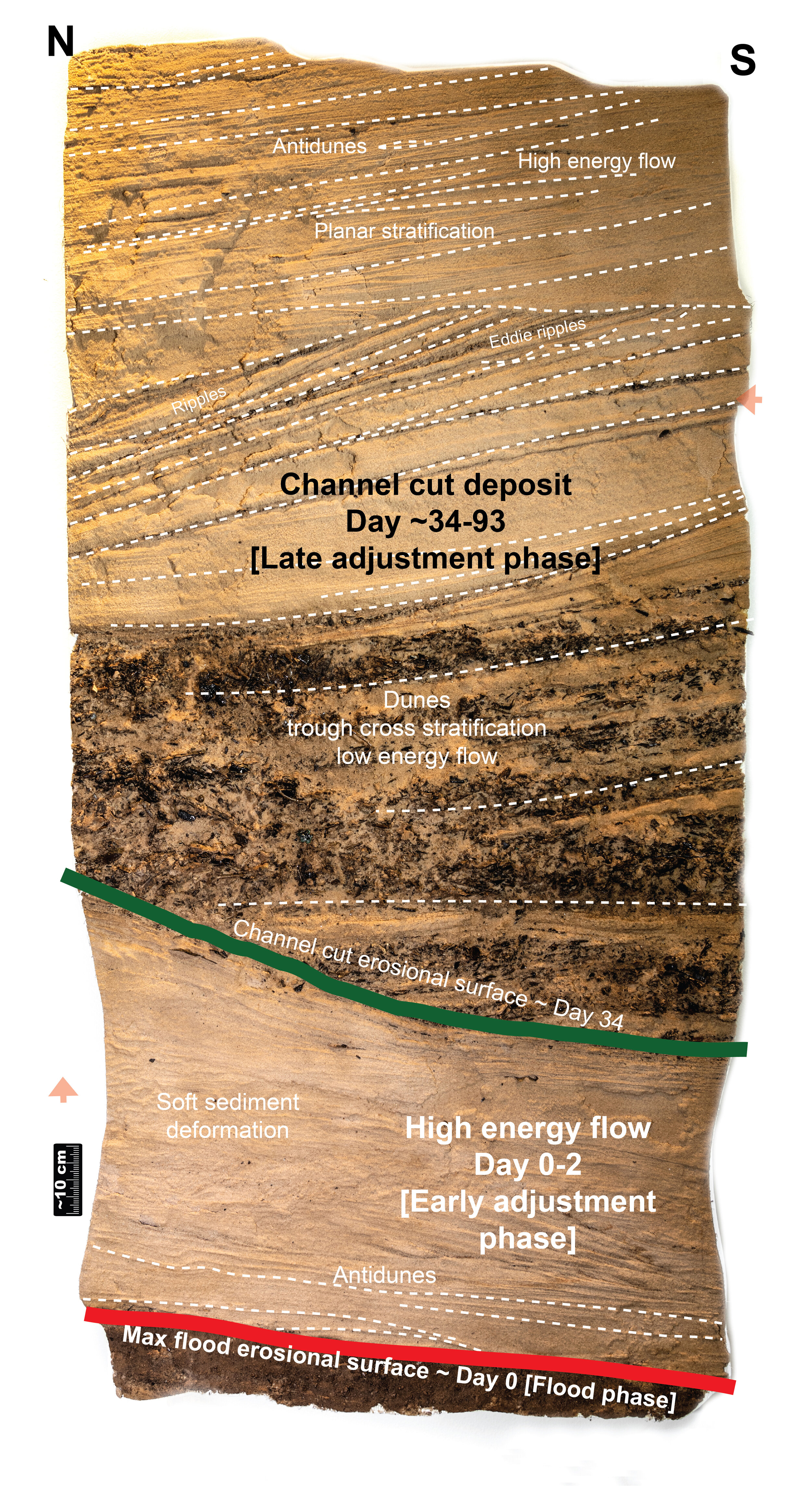Hurricane Harvey // Sand Peel Sculpture 5
Plate 10A. Sand Peel Sculpture 5
Context, Description, and Interpretation:
Peel 5 records the initial erosion during the maximum flooding phase, rapid deposition of sands as the energy levels quickly dropped, then a late adjustment as flow changed direction 90 degrees as stranded water cut down through the bar and returned to the original channel. The hydrologic archive shows the water level’s rapid rise and fall and the return to the channel > 30 days post maximum flooding. The human impact showed a change from food and shelter needs to financial needs when the bayou returned to the channel.
Summary: At the base of Peel 5 are pre-Harvey mud deposits cut by the maximum flood erosional surface. The maximum flood surface is overlain by a high energy flow deposit which contains antidunes. This is truncated by the channel cut erosional surface. Above this erosional surface, the channel cut deposit exhibits varying flow, with lower flow regime dunes overlain by ripples, transitioning upwards into upper flow regime indicated by planar stratification and antidunes.
The base of Peel 5 is a pre-Harvey mud deposit that is cut by the Hurriane Harvey erosional surface (red line). Above this erosional surface are antidunes, which indicate high flow velocity and upper flow regime. The antidunes are overlain by soft sediment deformation caused by a rapid influx of sediment. This layer is truncated by the channel cut erosional surface (green line). Above the channel cut erosional surface there is a thick package of trough cross stratification from dunes, which are lower flow regime. The lower troughs are rich in organic material which diminishes upwards, likely due to a change in sediment composition. Within the dunes there are some thin clay layers indicating a varying flow velocity. Moving up section there is a transition from dunes to ripples and eddie ripples with mud drapes, indicating a decrease in flow velocity. Overlying the ripples there is a transition from lower to upper flow regime, as planer stratification is observed follow, planar stratification and antidunes indicate very high velocities but low water depths. The red arrows indicate the change in flow direction from easterly flow below the channel cut (green line) to northerly flow above it.
The west end of Peel 4 and north end of Peel 5 abut at a right angle creating a 3D corner view.
Event Timing
Flood phase
August 28, 2017: The red line marks the erosional surface above the low energy pre-Harvey deposit. This erosion occurred during the flood phase as Buffalo Bayou rose to its peak at about 1:00am on August 28, with a measured gauge height of 15 m (41.9 ft). Flow was to the east.
Early adjustment phase
August 28-30, 2017: The water level dropped rapidly through August 30, with flow conditions were in the upper flow regime. On Peel 5, the sediment deposited during this time is between the red line and the green line. Flow was to the east.
Late adjustment phase
October 1-November 29, 2017: As the water level dropped, stranded water returned to the main channel, eroding across the newly deposited bar at a right angle.These deposits are from the green line to the top of Peel 5. Flow was to the north.

